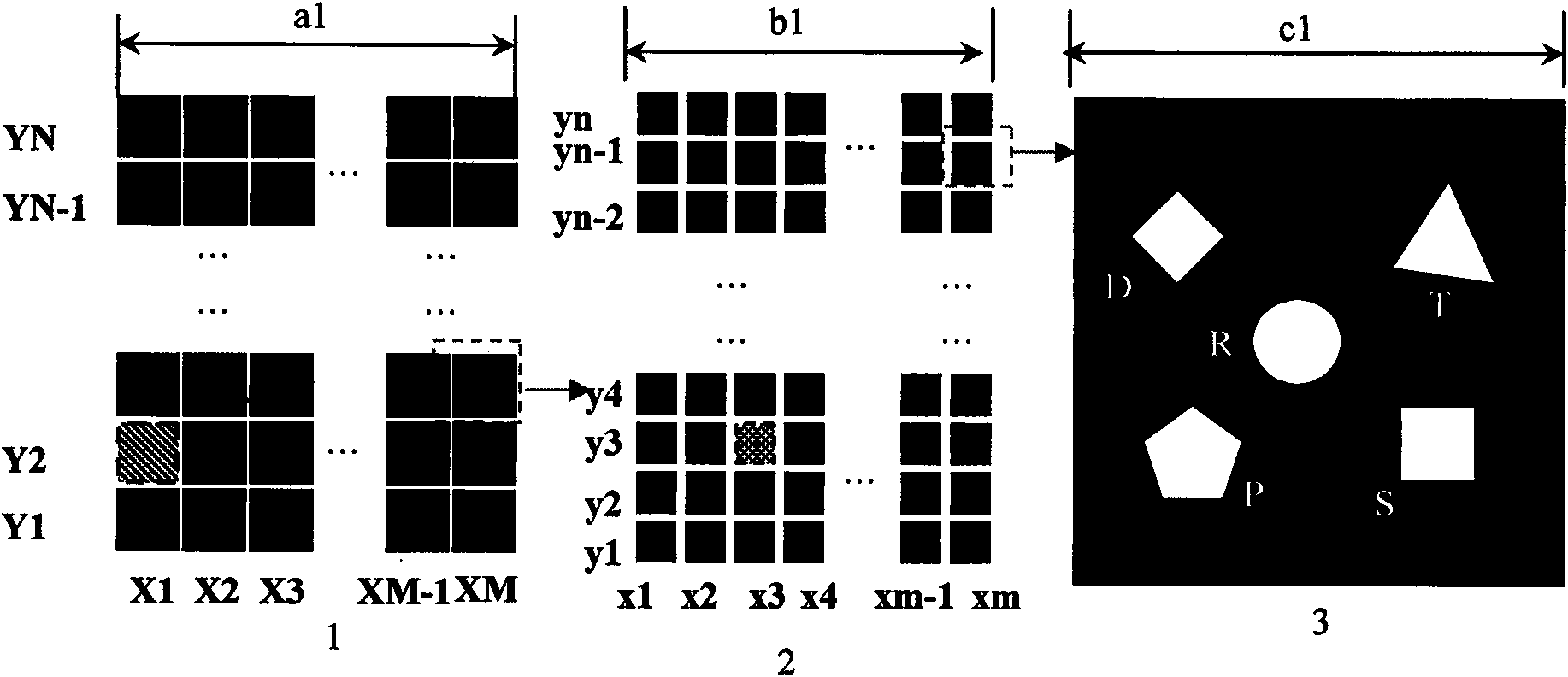Preparation process of single nanoparticle and array-based biological molecule detector thereof
A nanoparticle and biomolecule technology, applied in the field of biomedicine, can solve the problems of expensive preparation equipment for geometric shapes, achieve high input and output characteristics, accurate sensitivity, and reduce non-isotropic adsorption.
- Summary
- Abstract
- Description
- Claims
- Application Information
AI Technical Summary
Problems solved by technology
Method used
Image
Examples
example 1
[0045] The multi-level microstructure prepared by ultraviolet lithography technology, and the silver nanoparticle array was prepared by nanosphere stencil etching technology in the micro-window composed of 10nm chromium layer at the last level ( Figure 4 ). Firstly, the micropatterns on the mask are transferred to the chromium layer on the glass by using ultraviolet lithography technology, and the dark field images of several micropatterns in the last stage are as follows: Figure 4 A shows that the transcribed micro-windows are regularly arranged and clearly identifiable. Then, the desired nanoparticles were prepared in specific micro-windows by using nanosphere stencil etching technique (the cross section is shown in Fig. figure 2 a), Figure 4 B is an AFM photograph of a triangular silver nanoparticle array with a side length of 350 nm prepared in a circular micropattern (R) by nanosphere (about 1000 nm in diameter) stencil method, and the right side is the three-dimens...
example 2
[0053] According to the method in Example 1, well-dispersed triangular Ag nanoparticles prepared by focused ion beam technology in a micropattern made of a 3 nm-thick indium tin oxide film on a quartz plate as the substrate. The photo of the optical CCD to determine its position in the multi-level microstructure pattern and the photo of the AFM of its size are as follows Figure 9 A and 9B are shown. Figure 9 The white dot pointed by the white dotted line in the CCD image of A is the particle, such as Figure 9 The AFM image of the particles shown in B shows that the side length of the triangular pyramidal silver nanoparticles is about 350 nm. Construct the microfluidic channel on it by the microfluidic channel preparation process and reaction process of example 1, and the nanoparticle is modified with aminododecanethiol and hydroxydecylthiol, and use the DSS coupling agent to pass through the reaction (4) and (5) The particles are functionalized with the desired bioactive ...
example 3
[0055] According to the method in example 1, in the microwindow that 2.54mm thick biaxially oriented polypropylene (BOPP) is formed by the 10 nanometer thick chromium film, prepare triangular Au nanoparticle lattice by electron beam etching technique, the particle The side length is 60 nm. AFM photos of typical nanoparticle lattices are shown in Figure 10 As shown in A, its CCD photo is shown in Figure 10 B, True color photograph of the scattered light of the nanoparticle showing that the particle emits blue-green light. Use the molding process to prepare the microfluidic channel and build the microfluidic channel on it and functionalize the particle with the desired bioactive molecule IgG, wherein the modification process replaces 12-MUA with tiopronin (C 5 h 9 NO 3 S, TP). The construction material of the micro-channel is polypropylene and copper oxide nanoparticles (the particle size range is 10-50nm, the content is 10wt%), and the capping material is 1mm BOPP. The ...
PUM
| Property | Measurement | Unit |
|---|---|---|
| height | aaaaa | aaaaa |
| particle diameter | aaaaa | aaaaa |
| thickness | aaaaa | aaaaa |
Abstract
Description
Claims
Application Information
 Login to View More
Login to View More - R&D
- Intellectual Property
- Life Sciences
- Materials
- Tech Scout
- Unparalleled Data Quality
- Higher Quality Content
- 60% Fewer Hallucinations
Browse by: Latest US Patents, China's latest patents, Technical Efficacy Thesaurus, Application Domain, Technology Topic, Popular Technical Reports.
© 2025 PatSnap. All rights reserved.Legal|Privacy policy|Modern Slavery Act Transparency Statement|Sitemap|About US| Contact US: help@patsnap.com



